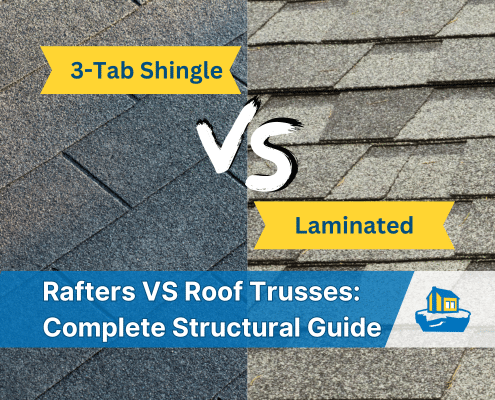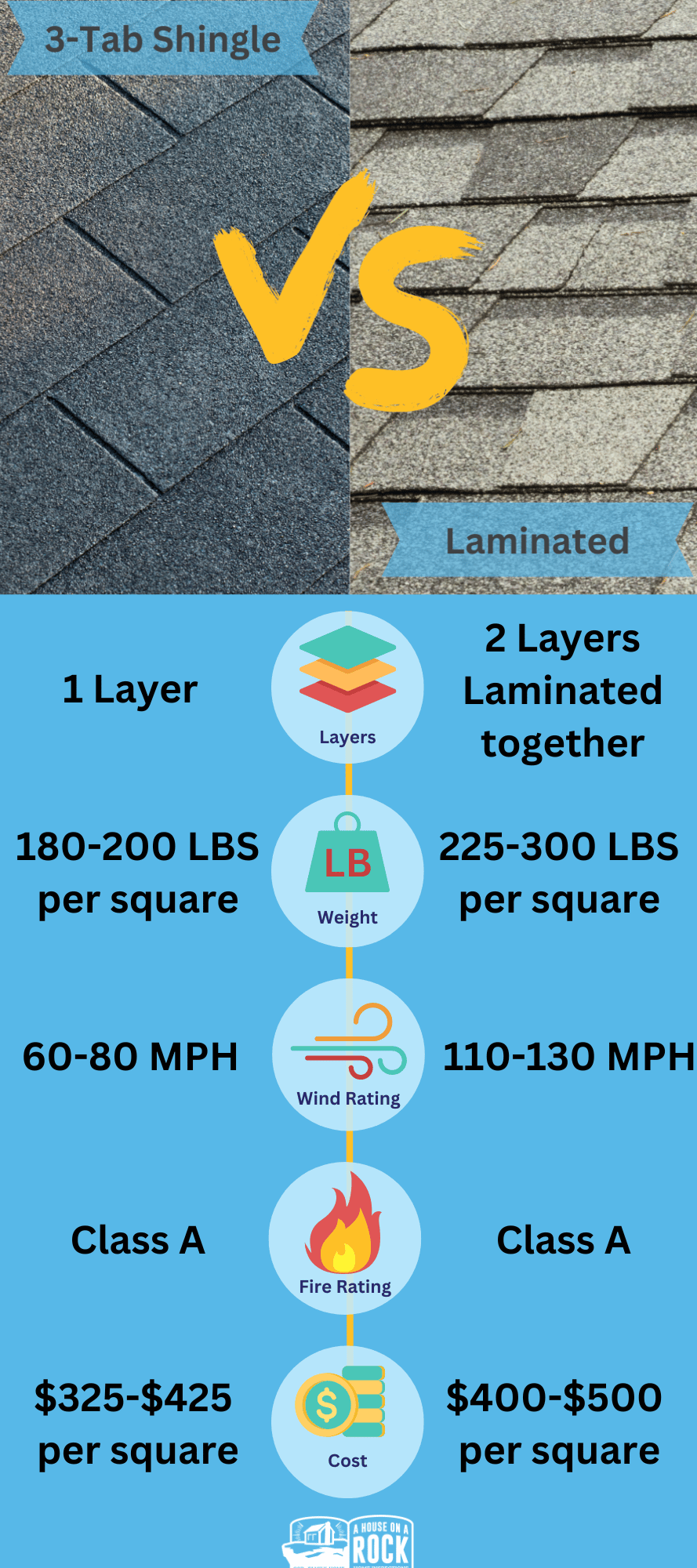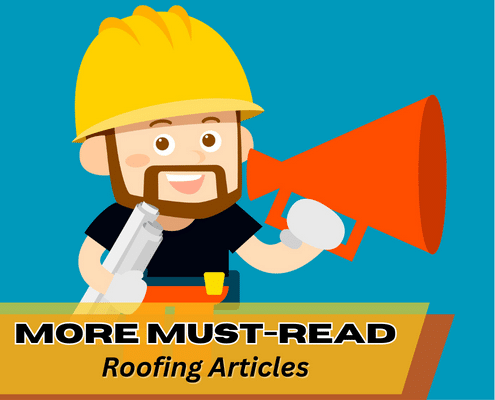4.9 1890+ Google Reviews

Roof replacement is about as fun as visiting the dentist: expensive, time-consuming, and necessary for the long-term health of your home. It’s expensive, and there are many types of shingles to choose from. Plus, getting a roofing contractor to call you back is unreasonably difficult. One choice you’ll likely face is 3-tab shingles vs. laminated shingles.
While many different roofing types exist, three-tab shingles and laminate shingles are the most common. Laminated shingles are also called dimensional shingles and architectural shingles. To make an informed decision, you’ll want to understand the key differences between 3-tab shingles and laminated shingles.
Asphalt shingles are the most common shingle type in the United States. And there are three different kinds of asphalt shingles – traditional 3-tab shingles, also known as strip shingles; dimensional shingles, also known as laminated or architectural shingles; and luxury shingles, also known as premium shingles.
The manufacturing process for the shingles is similar. However, there are notable differences between 3-tab shingles and laminated shingles.
Shingles start as a thin woven fiberglass mat. The fiberglass gives the shingle its fire rating and durability. Conversely, older 3-tab asphalt shingles and discontinued organic asphalt shingles did not have fiberglass. Instead, they had paper or felt, which did not hold up well.
Due to the fiberglass base layer, some tradesmen refer to these shingles as fiberglass shingles.
The layers of fiberglass are impregnated on the top and bottom with 400-degree liquid asphalt. The asphalt gives it its waterproofing qualities.
Granules of crushed rock are added to the top of the shingle. The granules provide UV protection and enhance the aesthetic of the shingle.
3-tab shingles are cut to size, and their notches are cut out. However, this is where the difference between 3-tab shingles and laminated shingles occurs. Laminated shingles are made from two separate layers laminated together, whereas 3-tab shingles are only one layer.
The additional layer makes laminated architectural shingles a more durable roofing material. It resists stronger winds, severe weather, and harder impacts. Plus, the additional pieces of asphalt give a more dimensional look boosting your home’s curb appeal.
Finally, a bead of asphalt sealant gets applied to the bottom of the shingles. Some shingles are coated with an algaecide to prevent algae and moss buildup.
In the comparison of 3-tab shingles vs. laminated shingles, there are objective, technical, and financial differences.
Although the manufacturing process is similar, the materials used are different. Laminate shingles consist of a heavier base mat, thicker asphalt, and stronger adhesives. Plus, laminate shingles are larger and weigh more. For example, a square of Certainteed 3-tab shingles weighs about 195 pounds. On the other hand, a square of their basic laminate shingles weighs 225 pounds. Finally, a square of their high-end laminate shingles weighs about 300 pounds.
All modern asphalt shingles have a class A fire rating. Class A is the highest rating. Materials with a class A fire resistance rating are unlikely to burn and contribute fuel to a fire.
Shingles undergo testing to ensure they can withstand strong winds. 3-Tab shingles generally can withstand 60-80 mph winds. On the other hand, Laminated shingles can withstand winds up to 110-130 mph. However, many manufacturers require six nails per shingle instead of four to achieve maximum resistance.
In practical terms, a 3-tab shingle can withstand gale-force winds but not hurricanes. Whereas laminated shingles can withstand category 3 hurricane winds.
All that being said, GAF has a new unlimited wind rating warranty. Some of their shingles, installed to specific instructions, with listed accessories, offer an unlimited wind rating warranty. If you live in an area with regular high winds, like Florida, these shingles may be a good option.
Impact resistance is not as straightforward as the other characteristics. No 3-tab shingles have a class 4 impact rating, and most laminated shingles do not, either. Roofing manufacturers generally have a line of shingles amongst their laminated shingles that are impact rated. If impact rating is essential to you, or required in your area, let your roofing professional know.
One of the key differences is the roof’s life expectancy. It’s important to note that roof warranty and lifespan are not the same. Many factors, such as climate, sun exposure, and attic ventilation, affect the roof’s lifespan. Obviously, 3-tab shingles have a shorter lifespan than laminated shingles.
3-tab shingles last about 15-20 years and typically include a 25-year warranty. Conversely, laminated shingles last around 25-35 years and include lifetime limited warranties.
You can use our roofing cost calculator to estimate the cost of a new roof. The labor cost, disposal, nails, and underlayment are relatively the same regardless of the type of asphalt shingle. The only real difference is the price of the shingles.
On average, expect to pay around 15 percent more for a laminated shingle. In other words, if a 3-tab shingle roof replacement costs $4600, expect to pay around $5300 for a laminated shingle.
Even though 3-tab shingles have an initial lower cost, laminated shingles are more cost-effective in the long run.
To put it differently, in the example above, the 3-tab shingle costs about $230-$306 per year. Whereas the laminated shingle costs about $176-$212 per year.
Unless you absolutely can’t afford the additional cost for a laminated shingle, there is no real benefit to putting a 3-tab shingle on your home’s roof.

When it comes to 3-tab shingles vs. laminated shingles, there is a clear winner. For the most part, residential homeowners should always opt for laminate shingles over 3-tab shingles. However, some investors and home builders may opt for the cheaper 3-tab shingles.
